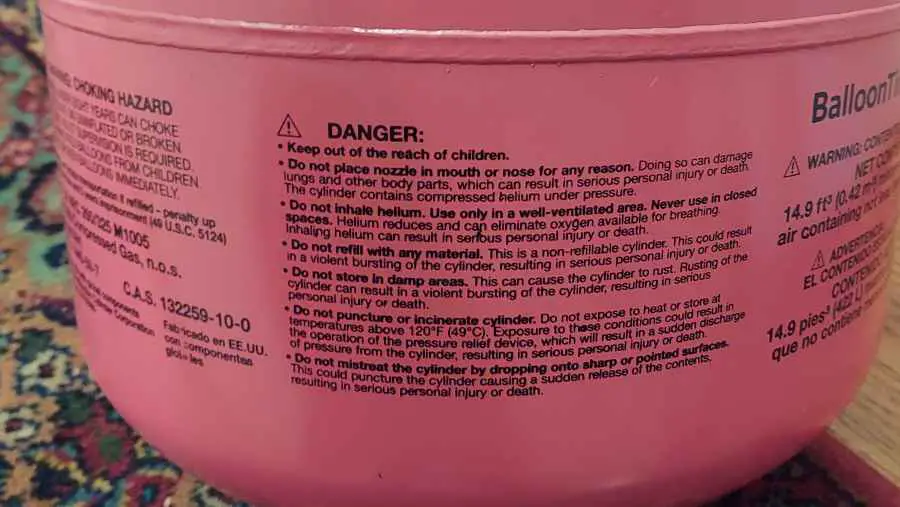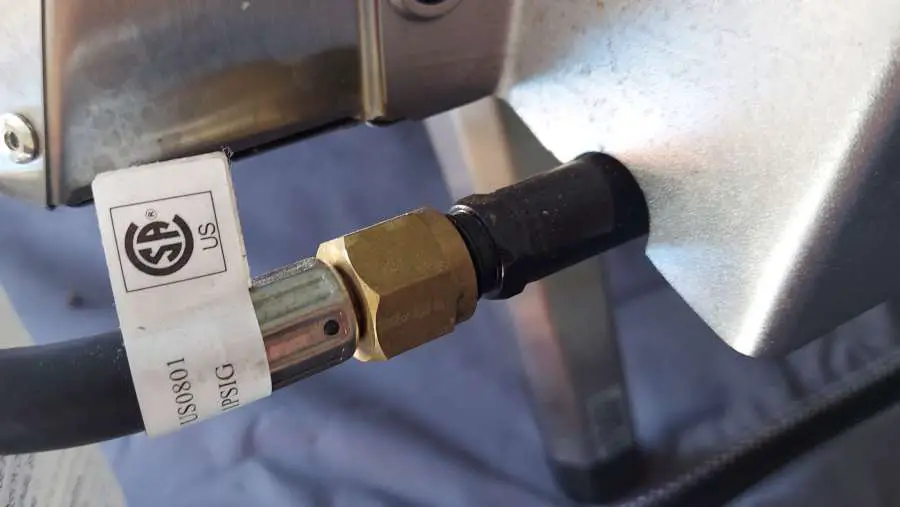Last Updated on May 23, 2024 by Dan Campbell
Let’s get straight to the point, helium is not flammable and it does not explode, however, the high-pressure tanks it’s stored in can rupture causing an explosion. Helium is an inert gas, meaning it does not react with other elements. So while the tanks themselves can explode, the gas inside will not catch fire or create a large fiery explosion. So why do people think it is flammable?
A lot of it comes down to misconceptions and assuming that because it is a gas it must be flammable or can create massive tnt like explosions. It’s also stored in large cylindrical tanks that feature safety labels, making it look similar to what you might see other flammable gases stored in, such as acetylene, propane, or hydrogen.
Normally I wouldn’t write an article about helium as it is not a power source or used as a fuel however when researching other flammable gases for my article on the temperature of propane torches, I kept coming across the question of people asking if helium is flammable or if helium tanks can explode.
My goal with this post is to educate you on helium, its flammability, its variety of uses, and to help dispel some common misconceptions about it.
Is Helium Flammable?
Helium is an inert gas of the noble family of gases, meaning it is not flammable and does not react with other elements. While it is stored in pressurized tanks that can present safety hazards such as explosions, the gas itself is not flammable.
You can find videos of balloons bursting into a large flame, or large party decorations creating large fires, however, these are usually balloons that have actually been filled with hydrogen and not helium. In some countries, hydrogen can still be used for filling balloons, and instead of purchasing helium tanks, homemade hydrogen reactions will be performed inside pressurized tanks. Sometimes the amount of material placed in the tanks is too much, creating an over-pressurized tank that can rupture creating a large fiery explosion.
Here is a video showing the difference between popping a balloon filled with helium vs hydrogen.
So while hydrogen and helium can sometimes be used for similar purposes, such as filling balloons, they are very different. Hydrogen should never be used for filling balloons, as it is extremely flammable and can create dangerous situations.
Can Helium Tanks Explode?
While helium itself is an inert gas and is not flammable, when stored in a high-pressure tank it can create an explosion if the tank ruptures, similar to a balloon popping. Unlike other flammable gases, the explosion is caused by the rapid expansion of the gas being released, and not through a chemical reaction by oxygen and an ignition source.

If a helium tank were to explode, it would not create a large fireball or create a fire hazard. However, due to the large amount of energy being rapidly released, it can still cause significant damage to anything around it.
It is important to always follow safety procedures when handling helium tanks and to always review the safety labels and any manuals that come with them.
Helium Uses
Because helium is lighter than air and inert, it is commonly used for party balloons due to its high safety. However, that is not its only use. Helium is an extremely versatile element due to it being a gas, non-reactive, and it does not become radioactive.
Due to its physical properties, it is used in the medical field such as in MRI machines and laser eye surgery tools, it’s used as a tracer gas to detect leaks in commercial products, and it’s even used with rockets by NASA and other space industries. It can be found in nuclear reactors, and as well as equipment used by the military.
How Helium is Made
While helium is the second most abundant element in the universe, making up large portions of stars, it is actually quite rare on Earth, and its presence wasn’t discovered on Earth until 1895. It’s also not renewable, so our supply is limited, and we currently cannot produce helium efficiently. All helium that we currently use is naturally made and extracted from natural gas.
75% of the global helium supply is produced in the United States, and 40% of the total supply used in the US is stored at the Federal Helium Reserve, operated by the U.S. Bureau of Land Management, located near Amarillo, Texas.
Helium occurs naturally and is created underground through the radioactive decomposition and decay of certain elements like uranium and thorium. Helium production is mostly a byproduct of purifying natural gas to produce a more efficient and clean burning fuel.
Natural gas goes through multiple processes starting with pretreating which removes impurities that might solidify, such as water vapor, carbon dioxide, and other hydrocarbons. Afterward, the natural gas is separated into its main components through a process known as fractional distillation. Here, methane and nitrogen are separated leaving a mixture of gases that contain a high percentage of helium. During this process, the helium is removed and further purified.
Safety with Helium and Helium Tanks
While helium is not flammable, it is important to always follow safety procedures and review the instructions and safety labels. Tanks should always be secured and stay in a vertical position unless designed to be horizontal. Tanks should be kept away from heat sources and kept out of direct sunlight as much as possible.
When transporting helium you’ll want to make sure to securely tighten the tank down, and not allow the tank to be overheated. It is also advisable not to transport helium in the passenger area of a car, and should always be kept in a well-ventilated area.
Some of the major safety concerns with helium are:
- Risk of the tank exploding
- Risk of suffocation due to inadequate ventilation and oxygen displacement in an enclosed space
- Risk of asphyxiation due to inhaling
- Risk of a gas embolism when inhaled
For the most part, helium is safe to use and handle, but you should always follow basic safety procedures and be familiar with pressurized gases.
Conclusion
While helium may not be flammable, pressurized tanks can explode if damaged or exposed to too much heat. Always follow safety precautions when dealing with helium and read the safety labels.
Hopefully, you’re familiar with helium now and understand its flammability as well as its ability to explode, and any misconceptions around it have been answered. Please feel free to reach out with any questions or comments, and as always:
Thank you and God Bless!




